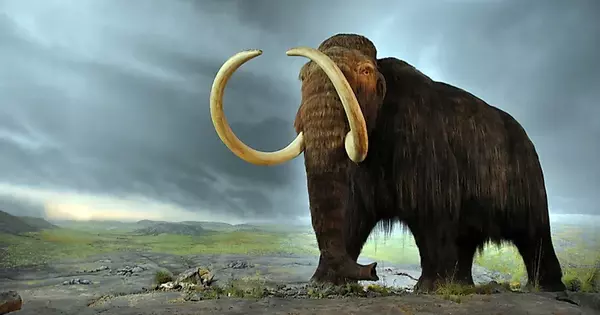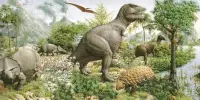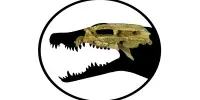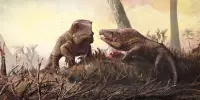Mammoths went extinct around 4,000 years ago. The exact timeline and causes of their extinction are still being debated by scientists, but it is believed to be a combination of climate change and overhunting by humans. The extinction of mammoths occurred around 10,000 years ago, with the last populations surviving on isolated islands until approximately 4,000 years ago. The exact cause of their extinction is still a matter of scientific debate, but factors such as climate change and overhunting by humans are believed to have played a role.
Environmental DNA, according to paleontologists, is not always useful in determining when animals like mammoths went extinct because genetic material found in sediment could have come from animals that died thousands of years earlier.
For generations, paleontologists have been curious about when mammoths became extinct, possibly because their extinction coincided with the arrival of humans in North and South America. So it’s natural to wonder if humans played a role in the extinction of these colossal ice-age beasts more than 10,000 years ago.
A University of Cincinnati paleontologist disputes the most recent timeline published in the journal Nature in 2021, which suggested that mammoths died much more recently than previously thought. An international team of researchers examined environmental DNA from mammoth remains and over 1,500 arctic plants to conclude that a wetter climate quickly changed the landscape from tundra grassland steppe to forested wetlands that could not support many of these large grazing animals, causing mammoths to become extinct as recently as 3,900 years ago.
The issue is you have no idea how old that DNA is, sedimentary deposits are complex. Materials of different ages are routinely buried together. We can radiocarbon date all kinds of things: bones, teeth, charcoal, and leaves.
Joshua Miller
But in a rebuttal paper in Nature, UC College of Arts and Sciences assistant professor Joshua Miller and co-author Carl Simpson at the University of Colorado Boulder argue that the environmental DNA used to establish their updated timeline is more complex than previously recognized.
“The issue is you have no idea how old that DNA is,” Miller said. “Sedimentary deposits are complex. Materials of different ages are routinely buried together.”
Researchers have many tools to date sedimentary deposits and the materials contained in them. But not everything can be dated, Miller said. “We can radiocarbon date all kinds of things: bones, teeth, charcoal, leaves. That’s very powerful. But currently, we can’t independently date DNA found in sediments,” Miller said.
We know from recent discoveries, such as the baby mammoth discovered in Canada this year, that many ice-age animals that died tens of thousands of years ago can become mummified in the dry, cold environment of the arctic. According to Miller, researchers cannot tell whether the environmental DNA preserved in sediment was shed by a living or dead animal.
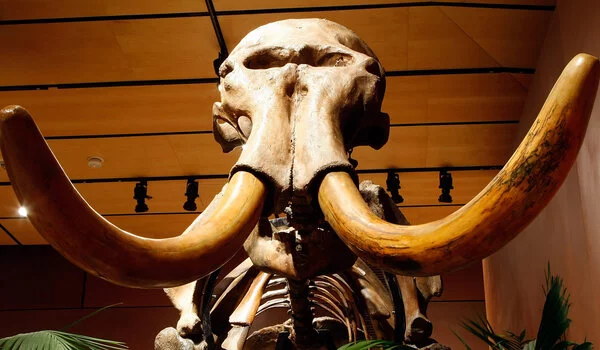
“DNA is constantly shed from organisms,” Miller explained. “In fact, DNA is shed long after the animal has died. Long-dead and even extinct species can continue to make their way into surrounding sediments where decomposition is slow. It can take thousands of years for something to decompose in the arctic and other cold-weather areas.”
The researchers say the slow decomposition of animals in arctic regions could explain how mammoth DNA is showing up thousands of years later than the most recent mammoth fossil discovered. The paper notes that the mummified remains of elephant seals near Antarctica can be more than 5,000 years old.
Simpson’s research into marine environments from recently eroded hillsides shows how difficult it is to date ancient specimens. “Seashells can live for thousands of years on the seafloor. When you see shells on the beach, some may be from recently deceased animals, while others may be from shellfish that died millennia ago” Simpson explained. “This also occurs in the vertebrate record.”
According to Miller, the question of whether humans had any impact on the global decline and extinction of mammoths remains unanswered. Humans have been known to use fire to dramatically alter landscapes, according to Miller. They also hunted mammoths and used their tusks for ivory.
So, when did the last mammoths go extinct? Scientists believe most mammoths died out more than 10,000 years ago, but remnant populations survived on islands like Russia’s Wrangel Island until much more recently.
According to researchers, one of the reasons mammoths captivate our imaginations is their coexistence with modern humans. “They’re startlingly similar to animals we know today,” Miller said. “We can almost reach out and touch them. That makes mammoths very appealing. They are the poster children for ice age megafauna for many people.”
Simpson mentioned that mammoths once roamed the California Channel Islands, close to where he grew up. A pygmy mammoth weighing 2,000 pounds lived on the islands. The largest mammal on the island today is a tiny endemic fox.
